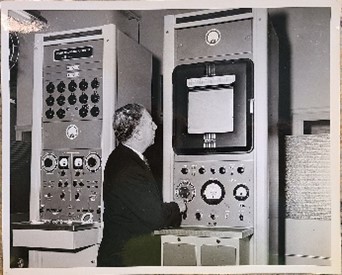All too often, we marvel at modern technology and forget to ponder the pioneers (and their discoveries) which made modern technology possible.
I used to teach Math at a local college, and I would often take time to teach a few interesting facts about the mathematical pioneers that discovered things we were discussing, things that were often named for the pioneer. I remember teaching about Pareto Charts, and started by introducing the namesake pioneer, Vilfredo Pareto. A Pareto Chart is a simple vertical bar chart, but the bars are ordered so that the tallest bars are leftmost, and the bars get smaller as you move to the right. It is a very simple concept, and I joked with my students that when you lived in the early days of mathematical discovery, it was pretty easy to get something named after you, but it would be much harder today, because all the simple discoveries are already taken, by people like Pareto. They were amused by this. I introduced them to the “McLeod Postulate” which states that “The likelihood that one would have a Postulate, Theorem, or Device named after themselves is indirectly correlated with the year of their birth.”
When it comes to Wireless communications, there were many pioneers, and there were very few discoveries which could be categorized as simple of basic. Most scholars of the Wireless history would agree that most notable early pioneers of Wireless communications were Michael Faraday (1791 – 1867), James Clerk Maxwell (1831-1879), and Heinrich Hertz (1857-1894). Notably, these three pioneers are namesakes for three things: The Faraday is a unit of electrical charge, the Hertz is a unit of frequency, and The Maxwell equations are almost as important as you can get in modern physics.
Michael Faraday’s work paved the way to an understanding of Electromagnetic Field Theory. His work culminated in the early 1830s when he made some key discoveries related to the relationship between electricity and magnetism. In 1864, James Clerk Maxwell took the theories postulated by Faraday, and used mathematics to advance them, and developed the foundations of Electromagnetic Field Theory, which still stand today. In 1887, Heinrich Hertz ran complex experiments which proved that Maxwell’s Field Theories were correct. Other pioneers picked up where Hertz left off, and there has been a steady stream of amazing advances in Wireless communications ever since.
Enough history. Time to start talking about the State of the Art in Wireless Communications.
If you want to learn about Wireless Communications, consider taking ATI’s upcoming course Wireless Communications and Spread Spectrum Design. This three-day course is designed for wireless communication engineers involved with spread spectrum systems, and managers who wish to enhance their understanding of the wireless techniques that are being used in all types of communication systems and products.
If you want to learn more about this class, or if you want to meet the instructor before you make your decision, we can help with that. ATI will be sponsoring a free one-hour virtual short-session where the instructor will give an overview of the topic and discuss what will be presented in the full course.
To learn more about both the free session, and the full course, or to register for one or both, you can do it here.
If you want to advance your skills in other areas, consider taking one of the many other courses offered by ATI. You can find our full catalog at www.aticourses.com
As an added bonus to readers who are interested in Physics pioneers, I present the following picture of “The Cioffi Recording Fluxmeter”. This revolutionary device employed integrators for tracing magnetization curves directly onto paper. I call this to your attention because the namesake, Paul P. Cioffi was my maternal grandfather, and he received a patent for this device in 1950 while work for Bell Laboratories. We are very proud of his many accomplishments in the field of magnetics.
